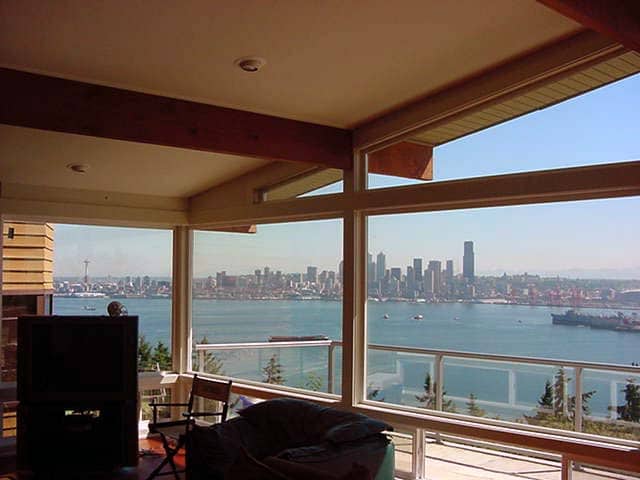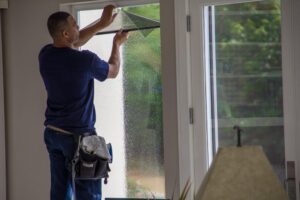If you’re a person who loves their personal space, there’s nothing as terrible as spending weeks, or even months, hunting for outstanding home furniture only to watch it gradually fade. The truth is, architectural styles favor larger windows and more natural light. That leaves the furniture in the house exposed to the sunlight infiltrating the interior. It eventually causes the furniture to fade and lose its original color.
Let’s walk you through some of the reasons that will cause your furniture to fade and how you can avoid it.
What Causes Furniture To Fade?
Naturally, most people cannot distinguish the various sections of the solar spectrum that cause changes in color to their furniture. Even though some elements cause more damage than the rest, the entire range is culpable for the fading.
For this reason, you should try and limit how much your furniture is exposed to the sun. One of the elements that cause the fading of furniture is heat and infrared light from the sun. The sun’s heat is responsible for about a quarter of all the fading seen in homes.
Another element in the solar spectrum responsible for the fading of your furniture is visible light. Visible light is the rays of sunlight that you see when the sun is out. It also plays a big part in your furniture fading.
However, the biggest culprit when it comes to furniture fading is harmful UV rays. Ultraviolet light is responsible for 40 percent of all furniture fading. The biggest challenge with ultraviolet light is that you do not feel it physically, nor can you see it with your bare eyes. That makes it especially dangerous not only to your furniture but to yourself and your pets.

A common misconception is that Ultraviolet light is not present during cold weather or cloudy days. People don’t know that UV light is present at all times, although strongest during the warm summer months. In some cases, certain types of clouds reflect more sunlight to increase the intensity of the Ultraviolet light. Other factors that cause furniture fading, although not as damaging as sunlight, include the interior lighting, pollutants, wear and tear, and humidity.
What Can You Do to Prevent Furniture Fading?
Even though fading is inevitable, it is very much preventable. Let’s walk you through some of the measures you can take to protect your furniture.
Heat Control Window Film
Installing window films like heat control window film or a 3m sun control window film is a very efficient way to mitigate the potential effects of infrared light, visible light, and UV light entering your home without installing curtains. These films can prevent up to 99 percent of Ultraviolet light and can repel up to 71 percent of solar energy, consequentially protecting your furniture from fading.
If you’re concerned that installing window tint, one-way window film, or reflective film will compromise the views from your window, you need not worry. You’ll still retain the same amount of natural light that reaches your house. It is important to note that you can not completely stop your furniture from fading as it is an inevitable process. However, by using 3m sun control window films, you’ll significantly block the sun’s rays. That will reduce the fading process, ensuring that your furniture and fabric will look in tip-top shape for a much longer time.
If you’re hoping to preserve your furniture, look no further than Brower Tinting and Graphics. We have been in business since 1966, providing top-quality window tinting solutions to our clients. Other benefits that you can expect from installing window films include glare reduction and a lower energy bill by improving your home’s energy efficiency.
Window Treatments
Another way of preventing and minimizing furniture fading is by using window treatments of some sort. That can be hanging sliding glass doors, curtains, draperies, blinds, shutters, shades, and awnings. These window treatments also help reduce heat from the hot summer sun, keeping the room’s temperature at an optimum level.
Abstinence
However, the abstinence method is the cheapest way to prevent furniture from fading. That demands that the furnishings be kept away from direct sunlight. Therefore, the furniture is placed in the shaded room areas away from windows and skylights.
Reorganizing the space might be needed to accommodate natural light but not in a way that directly reaches the furniture.
Modern Windows
If you plan on staying in your home for the long run, you might consider installing new windows. Modern windows are specially designed to block UV rays (they filter about 85 percent of the harmful rays) and make your home more energy-efficient.
Appropriate Fabrics
It is important to invest in furniture made of the best fabric your money can buy. Results differ depending on the fiber type, dye color, and pattern printing techniques. However, note that fabric cost has no bearing on the degree of fade damage, and expensive fabrics may be as vulnerable to fading as less costly fabrics.
Using Shields
Outdoor furniture is also exposed to direct sunlight and rain and needs protection from these elements. For these, you can use a water and sun shield to keep your outdoor furniture from soaked by rainwater and to protect them from UV rays.
You can spray a thin layer of sun shield on the furniture periodically for effective results. Most of them will dry and leave no odor. It is important to note that these shields are not intended for indoor use.

Solar Blinds
You can also consider solar blinds as an alternative to installing window films. Solar blinds are available in a variety of colors and patterns. They help prevent light from penetrating and reaching the furniture, thus protecting them from fading.
The Bottom Line
As inevitable as it is, learning the causes behind your furniture fading is the first step to preventing it from occurring prematurely and at a fast rate. From this column, you can see many reasons why furniture fades, but the most significant can be mitigated with window film and tinting. For the most effective window film and tinting solutions, you should consider Brower Tinting & Graphics.
Brower Tinting and Graphics provide Western Washington and nearby regions with the best window film solutions for residential and commercial buildings.
Give us a call today at (425) 251-6849 for more information on the right window film options and a free quote on our services.
